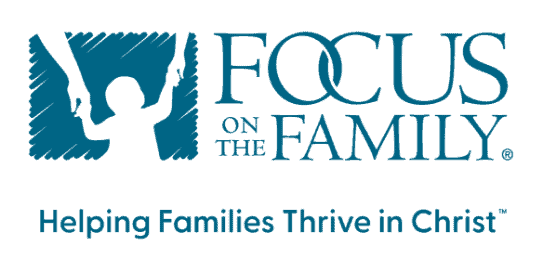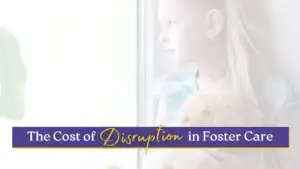Kinship care is when a child lives with relatives when their parent(s) cannot care for them. Within the context of foster care, kinship care often occurs when a child is in an unsafe environment and goes to live with other family members. Sometimes the child has experienced neglect or abuse. Other times, families may arrange kinship care to give the parent time to get back on their feet. Every situation is different.
Types of Kinship Care
There are many ways in which a child may begin to live with relatives. Depending on the family and situation, a child welfare agency may or may not be involved. Some kinship care arrangements are made between family members without involving the child welfare system. In these cases, the biological parents retain custody of their child, and the child is technically not in foster care. Sometimes families make these arrangements to give the biological parent time to get back on their feet. This is called informal kinship care.
With informal kinship care, it can be challenging for the kinship caregiver to do necessary things for the child, such as get them medical attention or enroll them in school. For this reason, some kinship caregivers receive temporary guardianship. The biological parent must grant temporary guardianship in order for a kinship caregiver to have it.
In some situations, a child welfare agency becomes involved in a case, but the State does not have custody of the child. A child welfare worker may recommend that parents voluntarily place their child with relatives to avoid going to court. This is called voluntary kinship care and varies greatly between states and by case.
The final type of kinship care is formal kinship care. This can also be called kinship foster care. In these cases, the child is a legal ward of the State and technically is in foster care. While the relatives have physical custody of the child, the child welfare agency remains involved in decisions about the child’s wellbeing. Depending on the state, the kinship caregivers may need to be certified in similar ways as foster parents.1
The Difference Between Foster Care and Kinship Care
Children in foster care are legally in the custody of the State. If a child is in formal kinship care, they are in foster care because they are a ward of the State. There are several scenarios, though, in which a child lives with a relative but is not in the custody of the State. When this occurs, the child is in kinship care but is not technically in foster care. They may be in informal or voluntary kinship care, or their relative may have temporary guardianship.
When a child is in kinship care, they live with relatives (“kin” or “kin-like”) rather than a foster family. Kinship caregivers are most often relatives, such as grandparents, aunts, uncles, or other relatives. However, it is also possible for family friends to provide kinship care for a child whom they have a familial relationship with. These caregivers are sometimes called kin-like, fictive kin, or nonrelative extended family members. Some examples of kin-like caregivers include neighbors, family friends, teachers, pastors, or others who are part of the child’s team. Children will often adjust more easily in a kinship or kin-like environment than in an unfamiliar foster home.
Another difference between foster care and kinship care is that kinship caregivers do not always become licensed like a foster family. This, of course, depends on the circumstance and the type of care a child is in.
An Example of Kinship Care
Jordan Walker* and his wife were kinship caregivers to their niece for almost six months. When Jordan’s sister-in-law needed a place for her daughter, Nicole*, to go, Jordan and his wife stepped up. For them, they were filling a gap while Nicole’s mother tried to get back on her feet.
Jordan and his wife gained temporary guardianship for the time that their niece lived with them. The child welfare agency was not involved in the arrangement. For Jordan and his family, welcoming Nicole into their home was a “no-brainer.” Their family viewed stepping into kinship care as an “extension of God’s love.” They wanted God to use them to make a difference.
Conflicting Emotions

When you are involved in kinship care, “there are lots of conflicting emotions,” Jordan explains. It was hard for them to watch Nicole’s mother make poor decisions that negatively impacted her daughter. Even after Nicole moved in with Jordan’s family, her mother rarely initiated communication. Jordan found it challenging to watch Nicole’s mother live as though she had no daughter.
Another major challenge Jordan faced while providing kinship care to Nicole was not knowing how long he would serve as her temporary father figure. As she struggled with the trauma she had experienced, Nicole exhibited challenging behaviors. It broke Jordan’s heart to see his niece in such pain. But he also recognized the opportunity to show her how loved and valued she is.
The Importance of Being Trauma-Informed
As a kinship caregiver, Jordan was grateful that he was trauma-informed. He had first encountered trauma-informed care through his wife, who had experienced trauma in her childhood. Jordan walked alongside his wife as she worked as an adult to recover from years of abuse. Secondly, Jordan was planning to be a teacher. During his training, he took courses that taught him strategies for coming alongside children who have experienced harm. In summarizing what things best equipped him to become a trauma-informed kinship caregiver, Jordan says, “education and experience.”
Finding Support
While the Walker family provided care to Nicole, they received support from various places. “Our church was very supportive,” Jordan recalls. One of the elders at their church, who was a counselor, checked in regularly on their family. Jordan’s parents also lived nearby and offered support as often as they could. Jordan was also grateful for the school counselor who offered support to Nicole.
A Reunification Experience
After nearly six months of living with the Walker family, Nicole reunited with her mother. “It was emotionally really hard for me,” Jordan recalls. He viewed Nicole as his daughter; she was part of all the same routines as his biological children. He also wrestled with wondering what would be best for Nicole. He wanted to be confident that she would be safe.
When reunification day came, Nicole was excited to be back with her mother. Jordan was grateful to see his sister-in-law get back on her feet, but he was sad to see Nicole go. Thankfully, he had consistently taken advantage of the opportunity to show Nicole her value and worth. He knew he had planted important seeds in her life. Looking back, Jordan describes their kinship care season as a “wild whirlwind.” He says, “It was incredibly hard but also incredibly rewarding and beautiful.”
What’s Your Role?
Kinship care can sometimes be a good option for a child whose parent cannot care for them. Depending on the arrangement, a child welfare agency may or may not be involved. It is important to know that kinship caregivers need support just like foster parents. Providing meals, running errands, and offering an encouraging word can help kinship caregivers feel supported. Above all else, pray for kinship caregivers. Kinship care often indicates that a family member has fallen on challenging times. Be a light to a kinship caregiver by letting them know you are praying for them and their entire family.
For more information about how to show support for foster families and kinship caregivers, visit WaitNoMore.org.
*Names changed for anonymity.
1Kinship Caregivers and the Child Welfare System. Children’s Bureau/ACYF/ACF/HHS.















